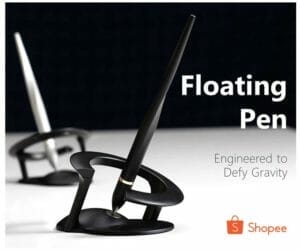In the Philippines, where towering skyscrapers meet lush landscapes, the foundation of any construction project is just as crucial as its design. While architects and engineers often focus on aesthetics and functionality, the unsung hero—footings—provides the essential support for these magnificent structures. Understanding the various types of footings in construction projects ensures stability and enhances durability against the country’s unique geological challenges, from typhoons to earthquakes.
As we delve into this fascinating world beneath our feet, we’ll explore 11 types of footings catering to different building needs and soil conditions across the archipelago. Whether you’re a budding architect, an aspiring builder, or simply someone curious about how our environments are shaped, join us to uncover how these foundational components are pivotal in constructing resilient edifices that stand tall against nature’s adversities.

What are Footings in Construction?
Footings are the foundational support upon which a structure rests, transferring loads from the building to the ground. They are critical in ensuring stability and preventing settlement issues that can lead to structural damage. In many construction projects, adequate attention is given to footings, which must be designed according to soil conditions and load requirements. Engineers often perform extensive soil tests to determine the best type of footing; this safeguards the structure and can also optimize material usage and costs.
In the Philippines, where seismic activities are common due to its location along the Pacific Ring of Fire, understanding the footings’ role becomes even more vital. Seismic considerations necessitate innovative designs for various types of footings that enhance lateral stability during earthquakes. For instance, deeper foundations or reinforced methods can significantly improve resilience against tremors while accounting for local weather conditions like typhoons and heavy rainfall in certain regions. As construction evolves with technological advancements, integrating smart materials into footing design presents exciting opportunities, potentially enhancing durability and adaptability for future developments amidst climate challenges.

1. Stepped footings
Stepped footings are crucial in ensuring the longevity and integrity of structures, particularly in regions like the Philippines, where moisture and soil conditions can vary dramatically. These footings effectively elevate the structural elements above potentially corrosive soil layers by creating a tiered base for metal columns. This design safeguards against rust and deterioration and enhances stability by distributing loads evenly across varying ground levels.
Moreover, stepped footings can be particularly advantageous on sites with uneven terrain. By adjusting each step to match the contours of the landscape, construction teams can minimize excavation costs while maintaining structural integrity. This adaptability makes them ideal for diverse construction projects, from residential homes on hillsides to commercial buildings on fluctuating topographies. Ultimately, using stepped footings is not just about protecting metal components; it’s about fostering resilience in any construction endeavor, facing nature’s challenges head-on.

2. Strip Footing/Wall Footing
Strip footing, a fundamental element of shallow foundations, plays a pivotal role in ensuring the stability and integrity of structures. Designed to distribute the load from load-bearing walls evenly across the soil, strip footings help mitigate settlement issues that can arise in various soil conditions common in many regions of the Philippines. By extending continuously beneath a wall rather than reinforcing discrete point loads, this type of footing not only minimizes uneven settling but also enhances structural longevity.
One unique advantage of strip footings is their adaptability to diverse building designs and site constraints. They can be easily adjusted in width and depth according to specific loading requirements and local soil characteristics, making them an economical choice for builders. Moreover, as sustainable construction practices gain traction, strip footings align well with eco-friendly initiatives by reducing material usage while maintaining robust structural performance. Emphasizing proper site investigation and design based on geological conditions can lead to substantial cost savings—highlighting an often-overlooked synergy between engineering precision and environmental stewardship in foundation work.

3. Isolated Footing
Isolated footings are versatile, accommodating various structural needs while optimizing material usage. Typically employed for individual columns or piers, these footings can be designed in several geometric shapes—circular, square, or rectangular slabs. Each design serves specific purposes: circular footings can effectively distribute loads in a compact area, while square and rectangular options offer excellent stability against lateral forces.
Moreover, isolated footings are particularly advantageous in the diverse Philippine landscape. Given the country’s range of soil types and environmental conditions—from coastal regions vulnerable to erosion to mountainous areas prone to shifting earth—tailoring the shape and size of isolated footings ensures that structures remain resilient against unique challenges. This flexibility simplifies construction and enhances overall site efficiency by reducing excavation work and enabling quicker foundation installation—vital factors for timely project completion amidst fluctuating weather patterns. Such strategic adaptability makes isolated footings essential in modern construction practices across the Philippines.

4. Flat or Plain Footing
Flat or plain footings are a fundamental choice in construction, particularly well-suited for structures with light loads. Their simple design, often rectangular, square, or round, provides a robust base that distributes weight evenly across the soil. This distribution is crucial in regions like the Philippines, where soil conditions can vary widely. The flat footing’s low profile minimizes pressure on weaker soils and helps prevent settlement issues over time.
What’s fascinating about flat footings is their versatility; they can easily adapt to various architectural designs while maintaining structural integrity. Furthermore, using local materials enhances sustainability and supports local economies by reducing transportation costs and environmental impacts. The subtle elegance of this footing type lies in its ability to combine functionality with simplicity, ensuring a solid foundation without complicating the overall project aesthetics. When considering footings in construction projects around the archipelago, flat or plain footings stand out as both practical and efficient choices adaptable to diverse building requirements.

6. Spread Footing
The spread footing is a foundational element crucial in ensuring various structures’ stability and longevity. By distributing the building’s weight over a broader area, this type of footing mitigates the risk of settlement on softer soil types commonly found throughout the Philippines. Whether in residential buildings or industrial facilities, spread footings help maintain structural integrity by providing a solid base that adapts to varying ground conditions.
One fascinating aspect of spread footings is their adaptability to different loads and materials used in construction. Engineers can customize dimensions based on specific requirements, enhancing load-bearing capabilities and minimizing excavation costs. Moreover, when designed with local climate factors in mind—such as potential flooding or seismic activity—spread footings can be optimized for performance and resilience, ultimately contributing to sustainable building practices in response to environmental challenges unique to the region.

7. Sloped Footing Or Trapezoidal Footing
Sloped or trapezoidal footings offer a unique advantage in construction projects, particularly in challenging terrains like those often in the Philippines. The design features a sloping top or side face that enhances stability and helps distribute structural loads more evenly across varying ground conditions. This adaptability is especially crucial in regions prone to heavy rainfall, where soil erosion and shifting can compromise foundation integrity. By mitigating these risks, sloped footings can be pivotal in prolonging the lifespan of structures.
Moreover, the aesthetics of sloped footings shouldn’t be overlooked. They can blend seamlessly into natural landscapes, making them attractive for residential developments near beaches or mountainous areas. Additionally, their efficient shape allows for effective drainage solutions – reducing water pooling around foundations and minimizing maintenance costs over time. As Philippine architects and engineers increasingly prioritize sustainable designs, incorporating sloped footings demonstrates functionality and an intimate consideration of environmental factors.

8. Strap Footing
Strap footings represent a unique approach in structural engineering, particularly when dealing with uneven load distributions. By connecting inner and outer columns through a strap beam, this footing type innovatively addresses scenarios where the loads from adjacent columns must be balanced. One of its key advantages is its ability to support structures while minimizing the use of extensive concrete foundations, ultimately fostering cost efficiency and swift construction timelines.
Another interesting aspect of strap footings is their role in optimizing space on challenging terrains. In areas where soil conditions vary significantly or the design calls for minimal excavation, strap footings can provide a solution that meets both stability and functional aesthetics. Moreover, they help to distribute forces more uniformly across larger areas without transferring loads directly into unstable soils below. As such, leveraging strap footings can ensure a long-lasting foundation that balances strength with environmental considerations—a win-win for modern construction practices in the Philippines.

9. Pile Foundation/Footing
Pile foundation footings are essential in areas with weak soil or where heavy loads are expected, ensuring structural stability and durability. Pays effectively mitigate the risks of settlement and failure by transferring loads deep into more stable soil layers. They can be used in various geological conditions, making them particularly versatile for diverse construction projects across the Philippines, from towering skyscrapers to coastal buildings.
Interestingly, advancements in technology have refined pile installation methods—using hydraulic hammers for driven piles or rotary drills for bored piles—thus minimizing noise and vibration during construction. This enhances site safety and reduces community disruption, which is critical in densely populated urban areas like Metro Manila. Furthermore, innovative materials such as composite piles are gaining traction due to their corrosion resistance and lower environmental footprint, aligning construction practices with sustainability goals while ensuring robust support systems for future developments.
10. Combined Footing
Combined footings represent a strategic solution in construction, particularly when dealing with closely spaced columns or walls. Unlike standard footings, which support individual pillars, combined footings distribute the load of multiple structures onto a single base. This design conserves materials, reduces excavation volume, and facilitates a more uniform settlement across the foundation, an essential factor in areas vulnerable to shifting soil conditions prevalent in parts of the Philippines.
One of the compelling advantages of combined footings is their capacity to enhance load-bearing efficiency. In urban settings where space is constrained and building footprints are limited, these footings offer Filipino architects and engineers greater flexibility without compromising structural integrity. Additionally, combined footings can mitigate issues related to differential settlement between adjacent columns that could otherwise lead to structural damage over time. Within contexts sensitive to environmental changes—like those often encountered during typhoon season—this adaptability makes them an invaluable component of resilient construction practices in the region.
11. Raft Foundation
A raft foundation, often regarded as a robust solution in construction, distributes a structure’s weight evenly across a large area. This footing type is particularly beneficial in scenarios where soil conditions are poor, or the loads imposed by the building might lead to differential settling. An RCC slab that covers beams and columns effectively minimizes stress at any given point, providing stability amid challenges such as uneven terrain or expansive soil.
Furthermore, their adaptability is one of the most fascinating aspects of raft foundations. In densely populated urban centers like many areas in the Philippines, maximizing land use while ensuring structural integrity is essential. Raft foundations allow for a greater surface area contact with the ground without requiring deep excavation—ideal for sites constrained by existing infrastructure or environmental regulations. Additionally, these foundations can facilitate faster construction timelines since they require less formwork and enable simultaneous work on various structural elements.
Summary: 11 Types of Footings in Construction Projects in the Philippines
In the diverse construction landscape in the Philippines, understanding the various types of footings is essential not just for structural stability but also for long-term sustainability. Each type of footing caters to specific environmental conditions and load-bearing requirements, showcasing how tailored engineering solutions can enhance building longevity. As climate change and natural disasters increasingly impact infrastructure, choosing the right footing becomes a pivotal decision that goes beyond traditional methods.
Furthermore, embracing innovative footing designs can significantly reduce costs and construction time while improving site safety. For instance, considering alternatives like micro piles or raft foundations can optimize resource utilization and lessen environmental footprints. By blending modern materials with local practices—such as integrating bamboo into certain footings—contractors can create structures that reflect cultural identity while meeting contemporary needs. Ultimately, engaging with the specifics of each type heralds a more resilient future for Philippine construction projects, encouraging ecological mindfulness and architectural ingenuity.














